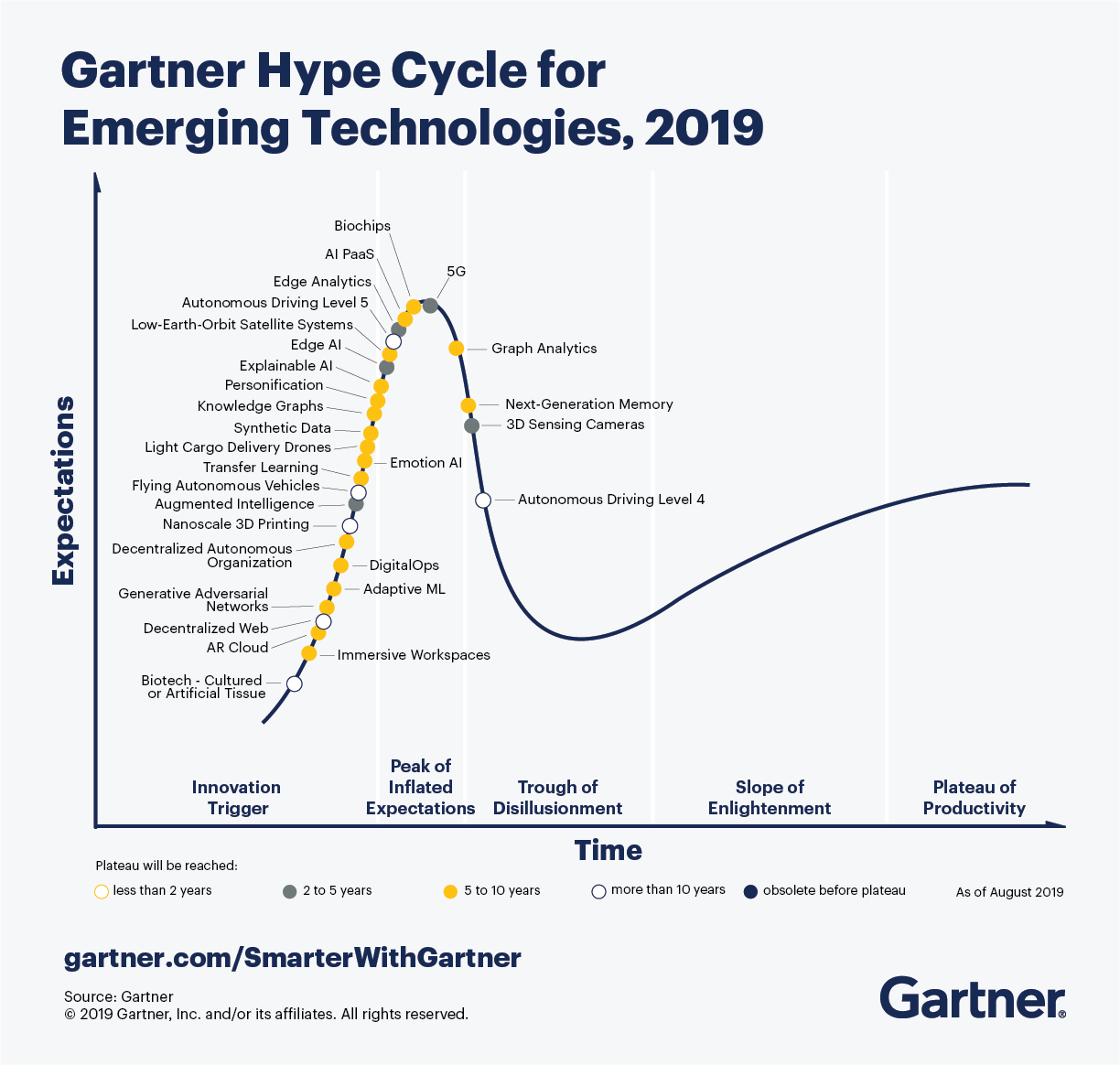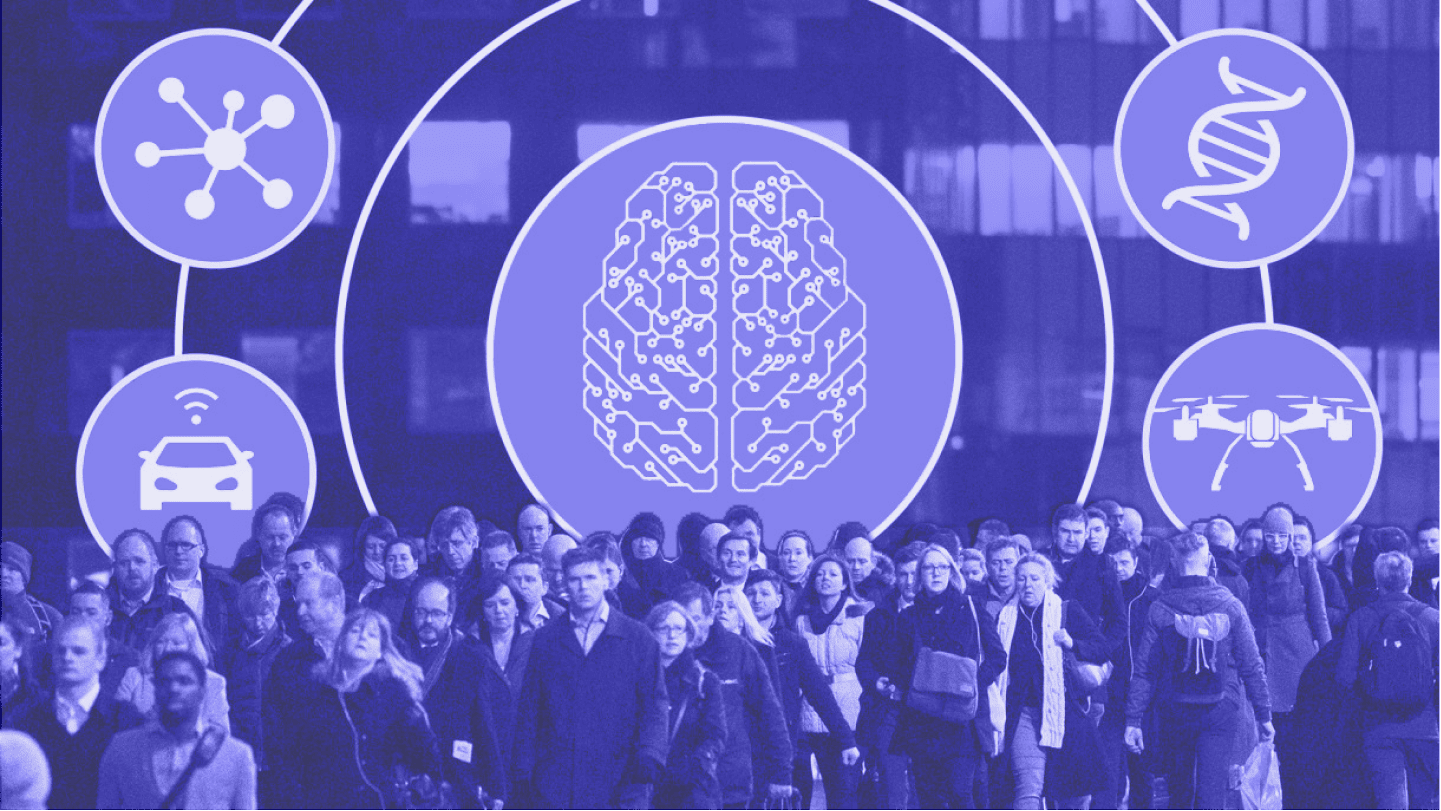We live in a digital age. A “smart home” or voice assistant has seemed fantastic lately but has already become part of everyday life. Technology moves forward every day. What awaits us tomorrow?
Top 5 Biggest Startup Trends of 2021
5 Startup trends in 2020
Perhaps, all entrepreneurs who want to open a technology business start by reading the book “Startup” by Guy Kawasaki. Guy is the legendary manager, Apple evangelist, and the man who unwound the Mac. In the book, Kawasaki described how to launch and present a startup, how to choose to position and write a business plan. But how to decide on a niche? In this article, we chose 5 the most progressive trends in 2019, based on Gartner Technology Hype Cycle.

- 01
Quantum computing
In 1997, the Deep Blue supercomputer played two matches with Garry Kasparov. The first match was won by a chess player, and the second - already wins supercomputer. And if Deep Blue was based on quantum technologies, then he would beat the man right away. The fact is that a regular computer works on the “bits” system: it knows only zeros and ones and makes calculations by brute force. In quantum computing, “qubits” are used — quantum bits that can have values not only 0 or 1, but their combinations are also called the superposition phenomenon.
Hypothetical quantum Deep Blue does not go through all the possible options for the outcome of the match - they all exist immediately and simultaneously. Therefore, quantum devices are much more efficient than traditional devices. We can, for example, describe any chemical substances and simulate reactions in a quantum device. At the exit, we will get new drugs, ultra-efficient vitamins or new composite materials for airplanes and automobiles.
Due to its “magical” properties, quantum computations will be useful in data processing and learning artificial intelligence.
Several startups are built on quantum computing or related fields. For example, Q-CTRL. A startup is developing tools to stabilize quantum equipment. The first quantum devices implemented in the physical form of IBM, Google, and Rigetti. On silicon chips, which are cooled almost to absolute zero, qubits are created and calculations are performed. Not everyone can afford it, but under normal conditions, quantum computers do not work perfectly: quantum properties are lost and many errors appear. This problem is solved by this startup. It produces cloud software that reduces the likelihood of error.
Academic communities and large corporations, such as IBM and Google, are actively conducting research aimed at exploring the possibility of creating a full-fledged quantum computer. Forecasts about the time of his appearance vary greatly - from 15 years and more. - 02
Unmanned systems
NVIDIA thoughts the drone to move in the forest. All thanks to the TrailNet neural network and AI-based on it. Artificial intelligence analyzes the image from the cameras and decides where and how to move.
This is one example of using unmanned systems. In addition to drones, unmanned systems are used in cars. In California, Zoox startup received permission to participate in a pilot program for transporting people in unmanned vehicles, and Waymo, a subsidiary of Alphabet, launched the service of unmanned taxis. A driverless taxi is being tested by Yandex. Taxi, Cognitive Technologies unmanned combines, and Tesla trucks are already transporting goods without drivers.
The similarity of unmanned systems appeared in the late 90s: adaptive cruise control, adaptive security systems, autonomous valet, but only with the advent of machine learning and neural networks, the systems reached a new level of autonomy.Unmanned systems - the area in which the wild competition takes place:
-
Domino's pizza
Ford is experimenting with Domino's pizza delivery with unmanned couriers along with Postmates delivery service.
-
Uber
Uber lured the developers of unmanned systems to Carnegie Robotics, and in 2016 Otto (startup developer of autonomous trucks) was swallowed up.
-
Baidu
Baidu, a Chinese search engine, tested the first versions of unmanned vehicles on public roads at the end of 2017.
-
Tesla
At the same time, Tesla built autopilot in their cars, which can be rebuilt and overtake other cars. By 2020, the company plans to transfer cars to full autonomy and is working to release the full self-management function: cars will be able to find the driver in the parking lot, pick up and take them to their destination.
In addition to automotive autopilots, there are projects that help drones "communicate" with each other. For example, the AirMap startup is an ecosystem in which drones transmit information to each other and use it to adjust flight. The company raised $ 46 million from Airbus, Microsoft, Sony, and Rakuten.
-
- 03
Security: blockchain and cryptography
Blockchain is not limited to cryptocurrencies. Blockchain is a huge database, to which connected users' computers and they all do the same operations: they record and store information. For example, transactions.
In fact, the technology provides the user with a digital signature that cannot be falsified, since everyone is following each other and verifying authenticity. The entire history of actions in the blockchain is stored distributed. That is why blockchain is a technology that is promising for secure transactions, banking, purchases and sales of goods, law, and anti-counterfeiting.
In this way, Sony has developed a system for storing information about education based on IBM's cloud-based blockchain network and Hyperledger Fabric platform. If the system is implemented, all information about diplomas, courses, certificates will be stored in a database that cannot be hacked to change the data.
In general, IBM is the pioneer of the research and implementation of the blockchain. The company has implemented more than 400 projects in such areas as finance, transport, public sector, health, and retail. Walmart and JB.com use an IBM project to control the quality of products in China. - 04
Neural networks and artificial intelligence
20 years ago, a business ordered websites to be “on the Internet”, then flew “into the clouds”, then to mobile devices ... And now it is introducing artificial intelligence and neural networks.
The neural network is a simulation of the structure of the brain with neurons and connections. Grid learns on a large amount of information - on Big Data, as in machine learning: it consumes, compares, learns, makes mistakes, finds patterns. A neural network is learning - this is its main task, and the result is forecasting, decision making, pattern recognition, optimization, data analysis, financial management.
At the moment, artificial intelligence is used to recognize text, pictures, sounds, in autopilot autonomous machines, so we can say that the AI is already making important decisions.In recognition of faces for different purposes, the neural network works best. Startup Clatifai finds faces in the photos, the Chinese Face ++ system uses recognition for goods transportation, YouDrive car-sharing service for account authentication, and the Chinese Bingobox for selling goods in their stores without cashiers.
In the next 5–10 years, the AI will learn how to make decisions and remove responsibility from a person: what route to drive from home to work — decides the algorithm in the car, how to make a diagnosis and suggest a course of drugs — decides the AI, whether to run another two kilometers on a treadmill - solves a fitness tracker with AI. Together with augmented reality, artificial intelligence will become part of man, as smartphones have already become.
- 05
Connected Home
Usually, the term “Internet of Things” means something abstract, like a “Connected Home” controlled from an application. But the Internet of things is, for example, familiar smart columns. In the US 47 million people have Alexa or Google Assistant. Assistant can dictate the to-do list, set the alarm clock, timer, ask to turn on the music, TV, dim the lights, order delivery and call a taxi. All this is the Internet of things.
Connected Home has one big problem - the security of products and systems.
Virtually any device can be hacked. Moreover, it is quite simple - and there have already been precedents. Hacking an IoT device is usually easier than a smartphone, and the consequences can be no less disastrous: attackers can gain access to cameras, passwords, negotiations, and business information. The problem is so serious that the startup Toka, which deals with IoT security solutions, received $ 12.5 million investment.
One solution is to combine the blockchain and IoT. The Slock.it project does just that - integrates Ethereum technologies into cars, houses and other devices so you can rent and sell the property without intermediaries.
In cooperation with blockchain + IoT, you can improve the management of large industrial systems or care for the elderly using IoT bracelets and medallions.





















